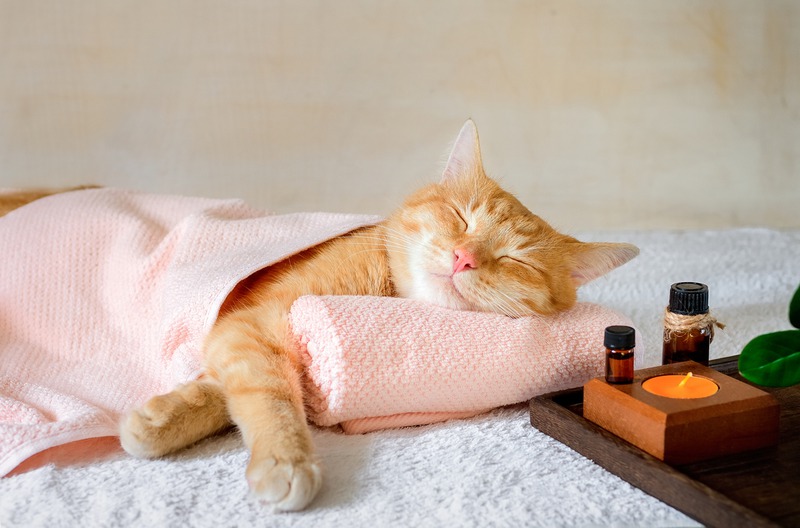
When it comes to maintaining the health and well-being of our beloved feline friends, establishing a preventive care routine is of utmost importance. By setting up a comprehensive preventive care routine, we can help our cats live longer and happier lives and catch potential health issues early enough to treat them effectively and affordably.
Establishing a preventive care routine for your cat is essential for maintaining their health and well-being. Here are steps to help you create a comprehensive preventive care plan:
1. Regular Veterinary Check-ups
-
Annual or bi-annual wellness exams at veterinary facilities like Houston County Animal Clinic are essential for cats of all ages, as they allow veterinarians to monitor your cat’s health and detect any potential issues early.
-
During these check-ups, your veterinarian will conduct a comprehensive physical examination, assess your cat’s weight, check vital signs, and discuss any changes in behavior or appetite.
-
Veterinarians may also recommend additional diagnostic tests, such as blood work, urinalysis, or imaging studies, to evaluate your cat’s overall health status and screen for underlying medical conditions.
2. Vaccinations
-
Core vaccinations are crucial for protecting your cat against common infectious diseases that can be potentially life-threatening. These vaccines typically include feline viral rhinotracheitis, calicivirus, panleukopenia (FVRCP), and rabies.
-
Your veterinarian will establish a vaccination schedule based on your cat’s age, health status, lifestyle, and risk of exposure to specific diseases.
-
Vaccinations may need to be updated periodically to ensure continued immunity against infectious diseases.
3. Parasite Prevention
-
Fleas, ticks, and internal parasites can pose significant health risks to cats, including skin irritation, allergic reactions, anemia, and transmission of diseases.
-
Your veterinarian will recommend a parasite preventive care program tailored to your cat’s needs, including monthly flea and tick preventives, deworming medications, and regular fecal exams.
-
It’s essential to administer parasite preventives consistently and according to your veterinarian’s instructions to maintain adequate protection against parasites.
4. Nutrition and Weight Management
-
Proper nutrition is vital for your cat’s overall health, growth, and energy levels. Feed your cat a balanced and nutritionally complete diet formulated for their life stage, breed, and specific dietary needs.
-
Avoid overfeeding and monitor your cat’s weight regularly to prevent obesity, which can lead to various health problems such as diabetes, arthritis, and heart disease.
-
Consult your veterinarian for dietary recommendations and feeding guidelines tailored to your cat’s requirements and health status.
5. Dental Care
-
Dental health is an integral part of your cat’s overall well-being. Establish a dental care routine to prevent dental problems such as tartar buildup, gum disease, and tooth decay.
-
Brush your cat’s teeth regularly with a pet-safe toothpaste and toothbrush designed for cats to remove plaque and bacteria from the teeth and gums.
-
Schedule regular dental check-ups and cleanings with your veterinarian to assess your cat’s oral health and discuss any cat and dog surgery needs. This will enable them to address any dental issues promptly.
6. Exercise and Mental Stimulation
-
Regular exercise and mental stimulation are essential for keeping your cat physically and mentally healthy.
-
Provide opportunities for play and interactive activities to engage your cat’s instincts, encourage physical activity, and prevent boredom.
-
Offer a variety of toys, scratching posts, climbing structures, and puzzle feeders to keep your cat mentally stimulated and entertained.
7. Environmental Enrichment and Safety
-
Create a safe and stimulating indoor environment for your cat by providing plenty of enrichment opportunities, such as perches, hiding spots, and interactive toys.
-
Ensure your home is cat-proofed to prevent access to potentially dangerous substances, choking hazards, and toxic plants.
-
Supervise outdoor access or provide a safe outdoor enclosure to allow your cat to explore and enjoy the outdoors safely.
8. Behavioral Observation and Training
-
Monitor your cat’s behavior and habits for changes that may indicate stress, anxiety, or underlying health issues.
-
Address behavioral concerns or litter box issues promptly by consulting your veterinarian or a certified animal behaviorist for guidance and support.
-
Use positive reinforcement training techniques to effectively reinforce desired behaviors and discourage unwanted behaviors.
9. Microchipping and Identification
-
Ensure your cat has permanent identification, such as a microchip, collar, and ID tag containing current contact information.
-
Microchipping provides a reliable means of identification and increases the likelihood of a quick reunion if your cat gets lost or goes missing.
-
Keep your cat’s microchip registration up-to-date with your current address and contact details to facilitate reunification during separation.
10. Regular Grooming and Health Monitoring
-
Establish a regular grooming routine to keep your cat’s coat clean, healthy, and free of mats, tangles, and debris.
-
Monitor your cat’s skin, coat, eyes, ears, and overall appearance regularly for any signs of abnormalities, injuries, or health problems.
-
Schedule veterinary appointments promptly if you notice changes in your cat’s health or behavior that may require medical attention or further evaluation.
Final Thoughts
Establishing a preventive care routine for your cat is one of the most beneficial actions you can take as a pet owner. This routine goes beyond just securing your cat’s health; it is about creating a lifestyle that enables your feline friend to thrive. As this may initially seem overwhelming, remember that your vet is your ultimate resource.
